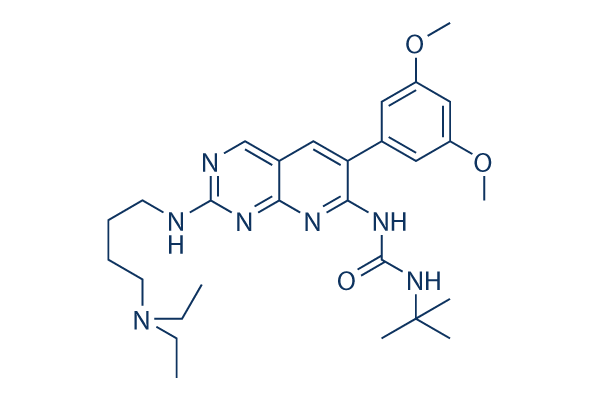As shown in Figure 4A, PTEN protein expression was sub stantially downregulated by specific siRNA treatment method of each C8161 CON and C8161 ODAM cells and this corresponded with improved AKT phosphorylation in the two cultures. Although PTEN siRNA remedy diminished PTEN protein amounts to a lesser degree in A375 ODAM cells, AKT phosphorylation was elevated To check regardless of whether suppression of AKT activation and the elevation of PTEN expression is precise to ODAM expressing melanoma cells or may be observed in other cell types, we examined AKT phosphorylation and PTEN expression in MDA MB 231 breast cancer cells the place we’ve also observed prominent anti tumor results upon ODAM transfection Lysates of manage and ODAM expressing MDA MB 231 cells have been probed for phospho AKT and PTEN expression and, as using the melanoma cell lines, MDA MB 231 ODAM cells exhibited decreased AKT phosphorylation to the activating S473 and T308 residues and, correspondingly, 3 fold greater ex pression of PTEN protein To even more investigate the function of PTEN in AKT sup energetic PDK1 and PI3K indicated no alterations in their activation state linked with ODAM expression Appreciably, levels of PTEN protein had been elevated in A375 ODAM cells relative to controls, and similarly in C8161 ODAM cells.
Accord ingly, measurements of PTEN mRNA by quantitative authentic time RT PCR indicated that the PTEN message was greater in A375 ODAM and C8161 ODAM cells over individuals in vector manage cells Meta bolic labeling analytop article sis confirmed the increased rate of syn thesis of PTEN protein in A375 ODAM cells In contrast to altered AKT activation, probing of blots with phospho ERK one GSK256066 and 2 antibodies for active MAPK indicated that levels of phosphorylated ERKs were no distinctive in management and rODAM expressing melanoma cells suggesting that signaling as a result of this pathway is simply not right altered by ODAM expression below these culture problems Due to the fact PTEN is recognized to inhibit AKT activation we wished to set up no matter whether the elevated PTEN amounts evi dent in ODAM expressing melanoma cells are accountable pression by ODAM we utilized BT 549 breast cancer cells that are phenotypically just like MDA MB 231 cells but don’t express practical PTEN Notably, BT 549 cells did not exhibit growth suppression in re sponse to secure ODAM expression though Western blot analysis indicated that phospho AKT amounts may also be unaffected by ODAM expression in these cells lending credence to the association of AKT suppression with increased PTEN plus the observed development inhibition in cells expressing ODAM.
ODAM transfected BT 549 cells do, even so, display greater ad hesion on Matrigel  coated plates indicating that ODAM expression in these cultures is functional within this respect and, even further, that ODAM effects on cellular adhesion are to some degree independent of regulation as a result of PTEN Discussion ODAM protein expression continues to be demonstrated within a wide variety of ordinary odontogenic, glandular, and epi thelial renewal tissues likewise as in malignancies such as odontogenic tumors, gastric cancer, breast cancer, lung cancer, and melanoma Prior retro spective scientific studies of breast cancer patient biopsies indi cated an increase in ODAM expression localized to your cell nucleus associated with advancing illness stage, however this expression corresponded with improved survival for sufferers at each stage A recent study of melanoma patient specimens indicated that nuclear ODAM expression correlates with sentinel lymph node metasta sis in more than 70% of scenarios, indicative of increased stage mel anoma at diagnosis and poor prognosis requiring a lot more aggressive therapeutic intervention These scientific studies have left the role of ODAM in malignancy unclear considering that, in each breast cancer and melanoma, nuclear ODAM localization corresponds with advancing condition stage yet its influence on sickness out e seemingly differs.
coated plates indicating that ODAM expression in these cultures is functional within this respect and, even further, that ODAM effects on cellular adhesion are to some degree independent of regulation as a result of PTEN Discussion ODAM protein expression continues to be demonstrated within a wide variety of ordinary odontogenic, glandular, and epi thelial renewal tissues likewise as in malignancies such as odontogenic tumors, gastric cancer, breast cancer, lung cancer, and melanoma Prior retro spective scientific studies of breast cancer patient biopsies indi cated an increase in ODAM expression localized to your cell nucleus associated with advancing illness stage, however this expression corresponded with improved survival for sufferers at each stage A recent study of melanoma patient specimens indicated that nuclear ODAM expression correlates with sentinel lymph node metasta sis in more than 70% of scenarios, indicative of increased stage mel anoma at diagnosis and poor prognosis requiring a lot more aggressive therapeutic intervention These scientific studies have left the role of ODAM in malignancy unclear considering that, in each breast cancer and melanoma, nuclear ODAM localization corresponds with advancing condition stage yet its influence on sickness out e seemingly differs.

 multivariate examination.
multivariate examination.